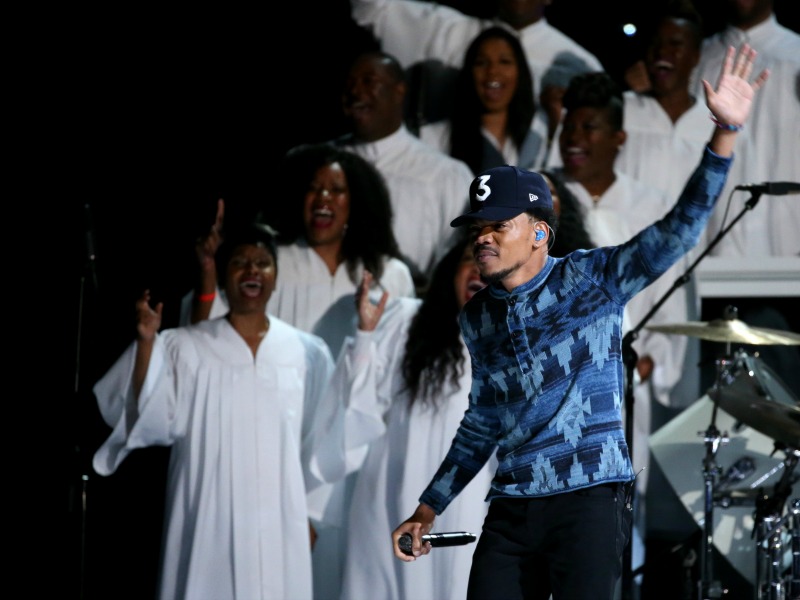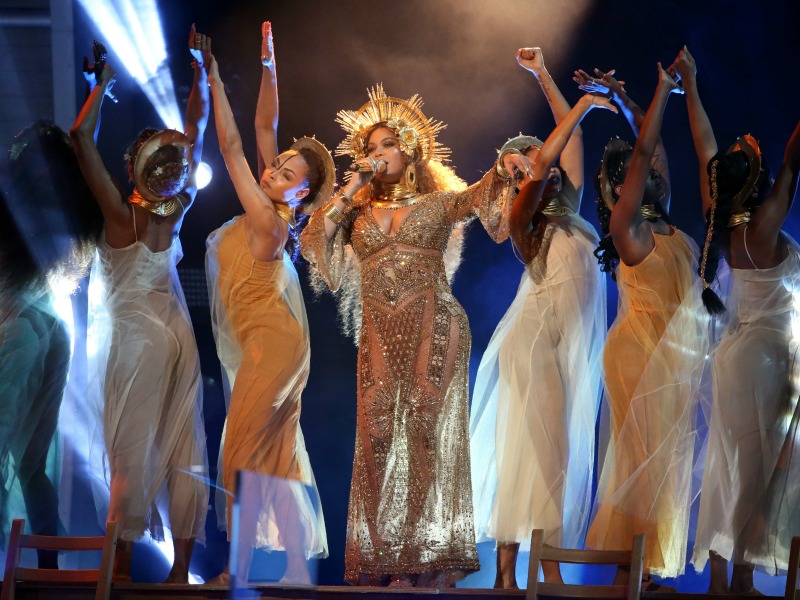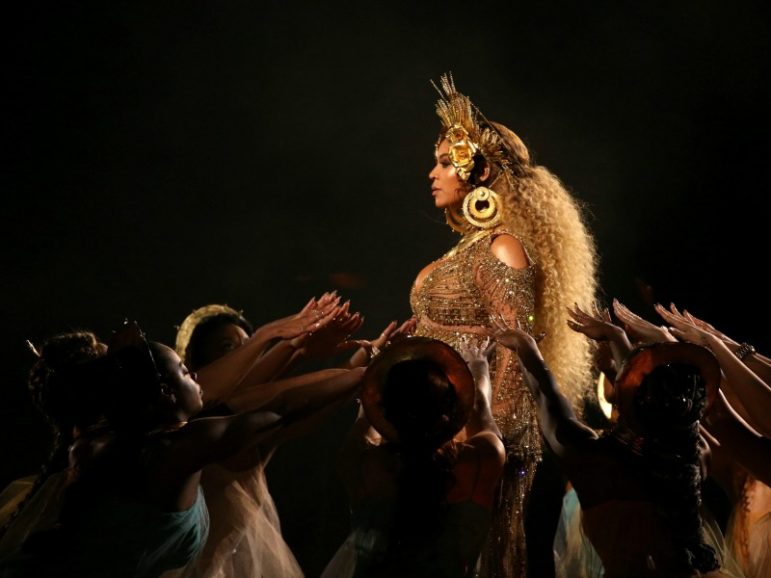(RNS) From the imagery of the divine mother in Beyonce’s performance to Busta Rhymes’s jab at President Trump’s “Muslim ban,” religion took center stage at the 2017 Grammy Awards.
It’s been featured before at the awards ceremony — in gospel hymns, a mock exorcism, even a real mass marriage ceremony — but Tripp Hudgins, a doctoral student in liturgical studies and ethnomusicology at the Graduate Theological Union, noted, “What makes the religious impulse so evident this year is that this year it’s reflecting the countercultural.”
It’s an obviously pregnant Beyonce giving “a history of black diaspora right there on stage,” rather than a “bubble-gum pop group” thanking Jesus, Hudgins said.
[ad number=”1″]
Indeed, it was mainly black artists who turned the spotlight on religion Sunday (Feb. 12) at the awards ceremony in Los Angeles, said the Rev. Broderick Greer of Grace-St. Luke’s Episcopal Church and School in Memphis, Tenn.
“They don’t see the secular and the sacred as being two different things. This is an animated universe with spirits and life and diversity and lots of modes of giftedness that are happening all at once, and it’s not either-or; it’s both-and,” Greer said.

Chance the Rapper performs at the 59th Annual Grammy Awards Feb. 12, 2017 in Los Angeles. Photo by Lucy Nicholson/REUTERS
The appearance of religious themes began with Chance the Rapper accepting the first award — for best new artist.
“Glory be to God. I claim this victory in the name of the Lord,” said the artist, who won three Grammys total, including best rap album and rap performance.
Later, he exuberantly performed his songs “How Great” — featuring the chorus of Christian artist Chris Tomlin’s “How Great Is Our God” — and “All We Got” with Kirk Franklin, Tamela Mann and a white-robed gospel choir.

A Tribe Called Quest and Anderson Paak break down a wall during their performance at the 59th Annual Grammy Awards Feb. 12, 2017, in Los Angeles, Calif. Photo by Lucy Nicholson/REUTERS
A Tribe Called Quest mixed religion with politics in their performance of “We the People,” joined onstage by Anderson .Paak, Consequence and Busta Rhymes. Rhymes thanked President Trump for his “unsuccessful attempt at the Muslim ban” as performers, including a woman in a hijab, knocked down a wall constructed onstage.
Tribe members Q-Tip and Ali Shaheed Muhammad both are Muslim, Slate noted.

Beyonce performs at the 59th Annual Grammy Awards Feb. 12, 2017, in Los Angeles, Calif. Photo by Lucy Nicholson/REUTERS
But perhaps the performance richest in religious imagery was Beyonce’s, which evoked iconography of the divine feminine from several faith traditions.
During the performance, special effects made it appear she had many arms, mimicking Kali, a Hindu goddess who has been worshipped as the Divine Mother and Mother of the Universe.
Observers on social media noted references to the Roman goddess of love and beauty, Venus, and Mami Wata, or Yemoja, the Yoruba patron deity of women, especially pregnant women.
[ad number=”2″]
The golden, halolike crown, ornamented with roses, and the veil Beyonce wore also evoked icons of the Virgin Mary, including depictions of the Virgin of Guadalupe, in Catholicism.
And the Rev. Wil Gafney, associate professor of Hebrew Bible at Brite Divinity School, said her visibly pregnant appearance was a rejection of the church’s historically uneasy relationship with sex and the body, and particularly black female bodies. The singer also evoked Mary in the Protestant tradition, who, after giving birth to Jesus, “continues to live as a human woman with hurts and hopes, fully sexually active, alive to her body, other pregnancies.”
“Beyonce represents the kind of fully human, sacred woman that the Blessed Virgin embodies for me,” Gafney said.
[ad number=”3″]
Elizabeth McAlister — a professor of religion at Wesleyan University and scholar of Afro-Caribbean religions who taught Beyonce’s video album “Lemonade” as part of a course titled Anthropology of Black Religions in the Americas — said the singer was “performing brilliantly the image of the powerful divine mother, and that image can be found in the Virgin Mary, the Afro-Creole goddesses and the Hindu goddesses.”
McAlister, like a number of viewers on Twitter, thought the pregnant singer’s appearance most strongly resembled the Yoruba deity Oshun, who is associated with fertility and pictured in gold and yellow.
The professor described it as “a performance of religious Creolization in action, in movement,” describing the way colonized peoples have continued to practice indigenous religions “under the cover of Catholicism” by blending the traditions.
But not all of the comparisons online were kind. Some charged the singer with both appropriation and blasphemy.
“There is some debate in communities of Afro-Caribbean spirit workers over whether she is appropriating these styles and images and the power associated with them or whether she is drawing on her own Creole roots to valorize these traditions,” McAlister said.
“My students argue both sides of the story, but at the end of the day, they love Beyonce.”





